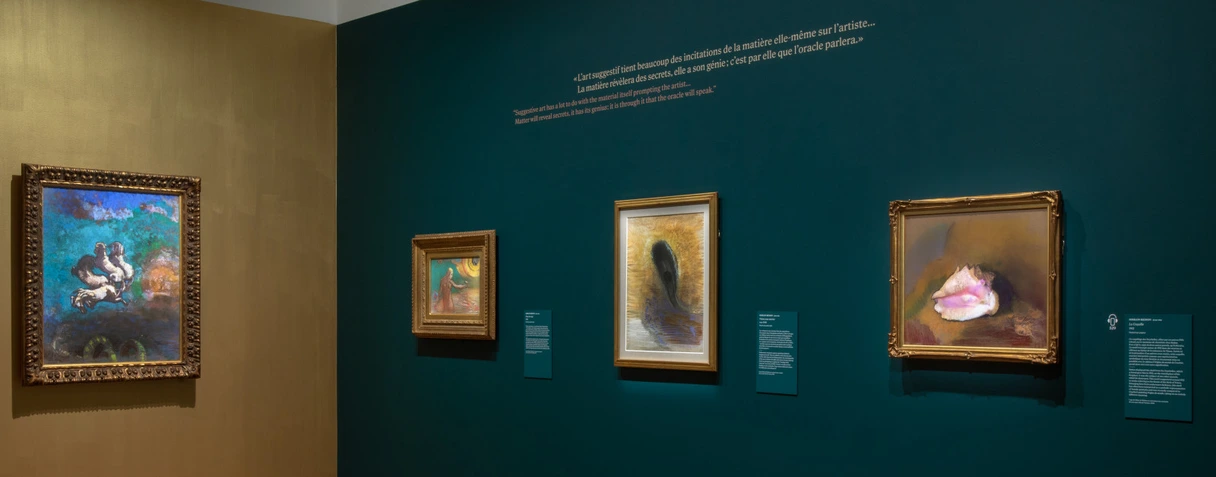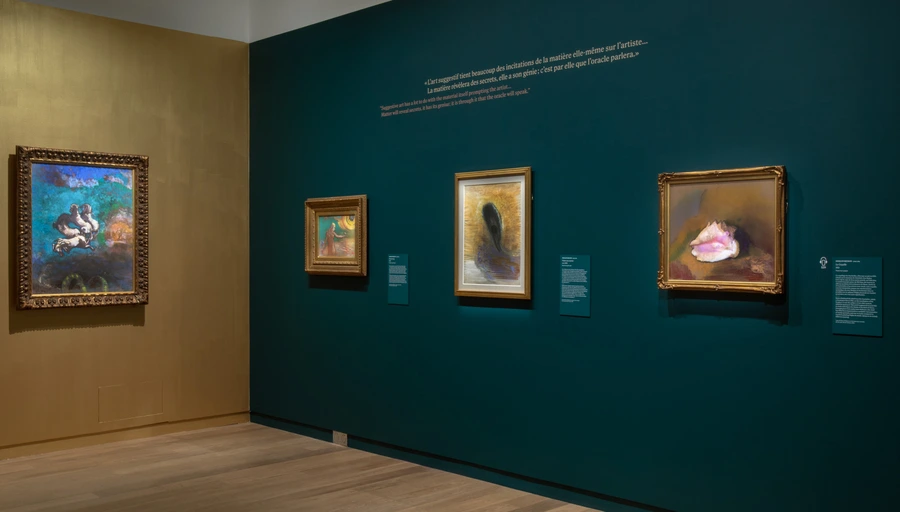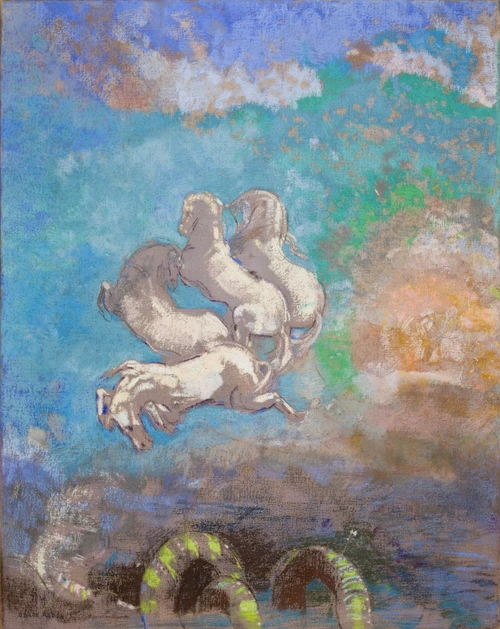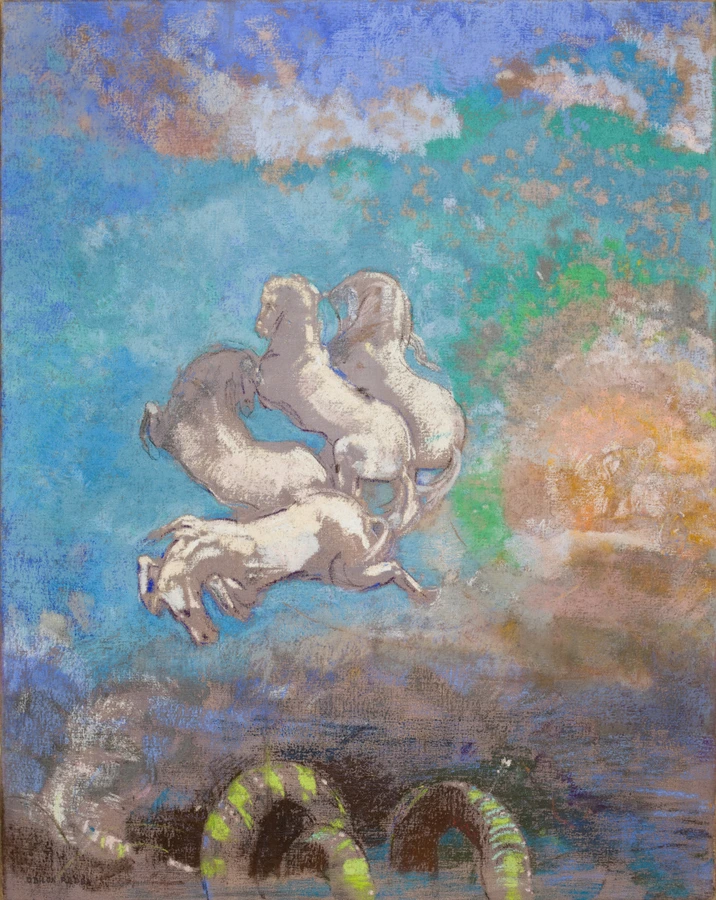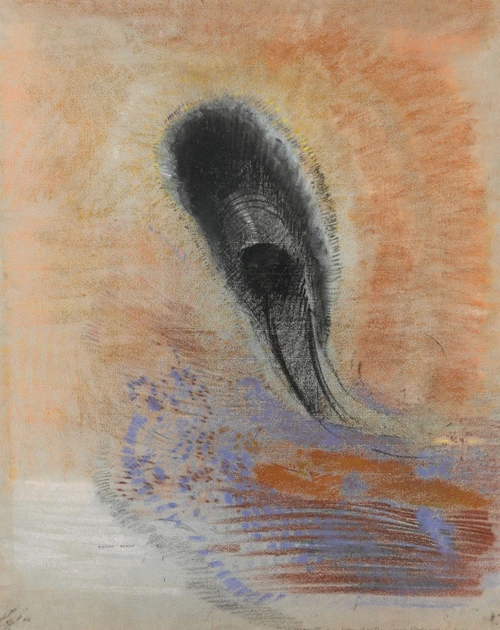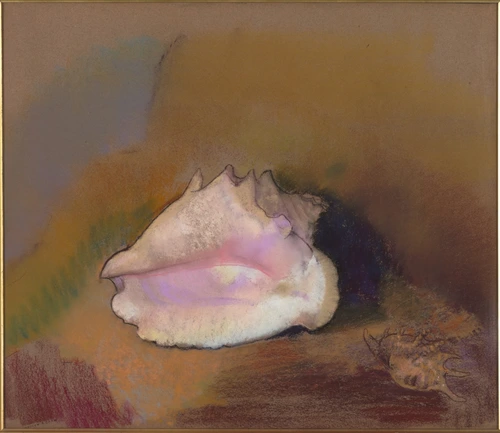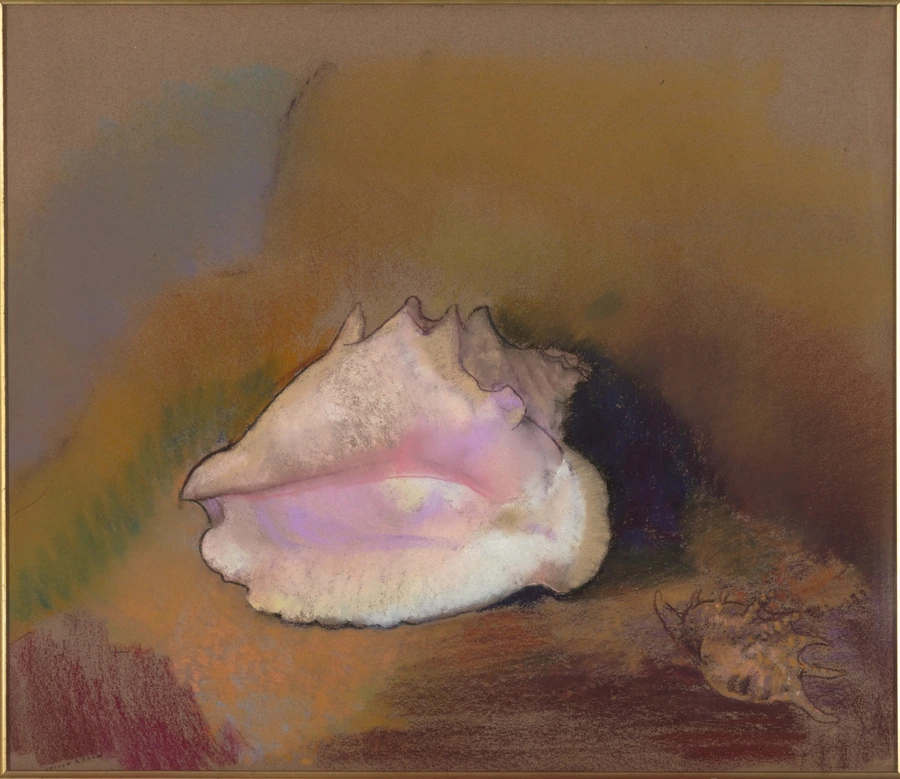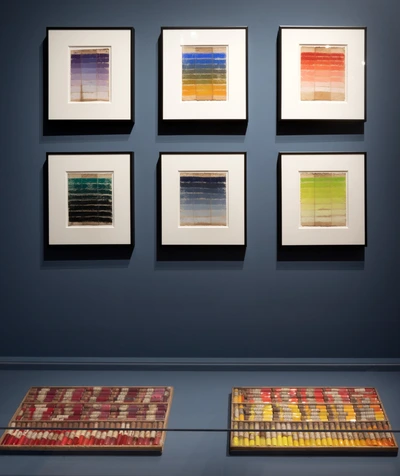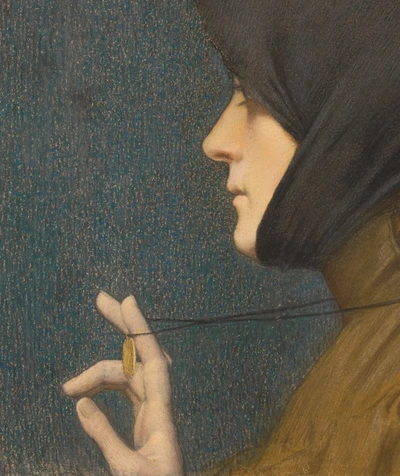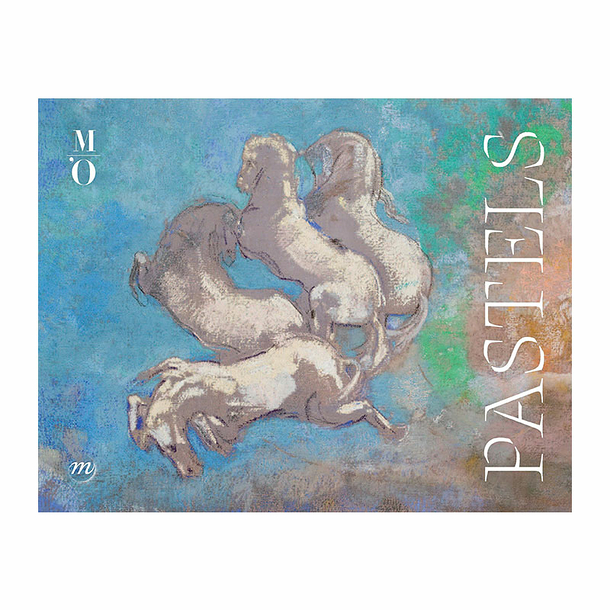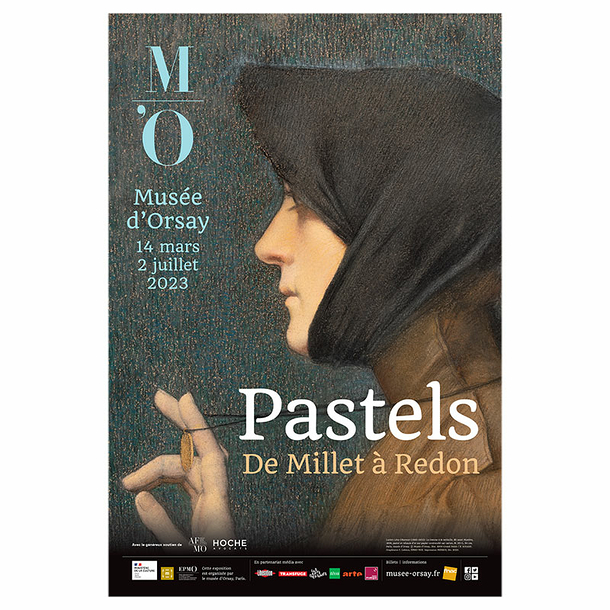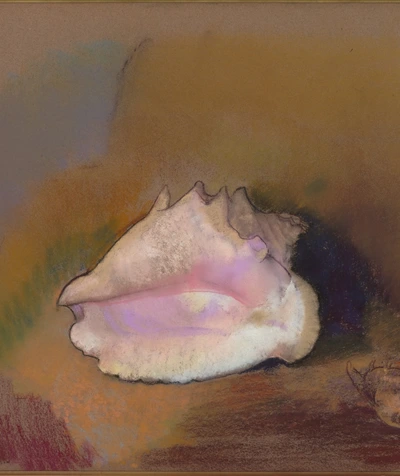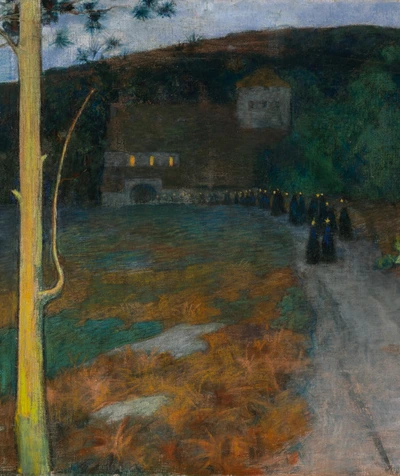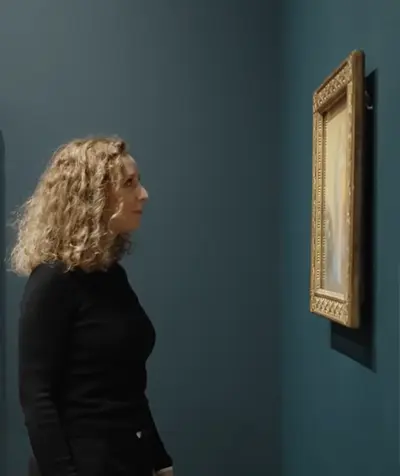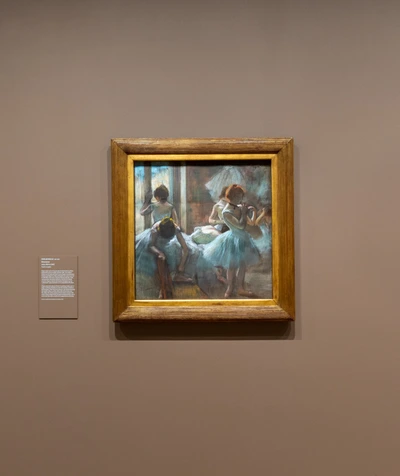Redon first distinguished himself with his “noirs”, piercing phantasmagorical charcoals, before firmly turning to colour from 1890. He always favoured matteness, notably achieved with pastel, which shared the powdery aspect of charcoal, “a powder that is volatile, impalpable and fleeting in your hand”, whose capacity to absorb light creates a similar effect of depth.
Redon often used mixed media. In his works, the transition from black to colour occurred gradually, and charcoal often remained present in his pastels. He also frequently used pastel to enhance his paintings, as well as Conté pencils and pastel pencils to create layered effects. He used parallel lines and hatching to create vibration and energy in colour at its most intense. After 1912, Redon stopped using a fixative, which often affected colour and flattened the pigments’ bloom. However he paid great attention to the framing of his pastels to preserve them.
